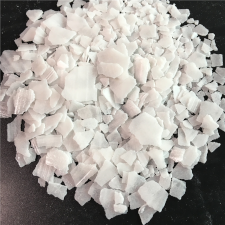Description
Aloe, whose Arabic name ‘saber’ symbolizes patience, is used in many cultures for different purposes. The first documented use of aloe was from the ancient Egyptians. Around 1500 B.C., the Egyptians recorded use of the herbal plant in treating burns, infections and parasites. The Mahometans hung aloe over their doorway in order to protect the residents inside. Also known as ‘lily of the desert’ and ‘the plant of immortality’, historical evidence shows that the aloe plant emerged in the warm, dry climates of Africa. This plant grows approximately two feet high and is composed of long, spiky, thick, lance-shaped, green leaves which bloom in a rosette shape and flourish in warm environments. The leaves, which hold the majority of the desired product, can grow up to eighteen inches high and two inches wide.
Aloe is thought to heal epithelial tissue, which is defined as a layer of cells, which covers the body. Skin, therefore, is the body’s largest organ and is most benefited by the healing properties of aloe. Aloe is well reputed for the medicinal value of the sap found within its leaves. This sap, a thick, mucilaginous gel, is made up of a variety of amino acids, primarily alanine. The predominant properties of aloe are a result of the activity of amino acids on the skin. When topically applied, the gel that is contained within the leaves of the aloe plant has traditionally been shown to accelerate wound-healing time and alleviate burns. It also helps to lessen the risk of infection during the healing process. Worldwide, many civilizations such as the Greek, Roman, Persian, Indian, Japanese, and Russian, extolled the medicinal uses of aloe. When taken internally, this plant has been used for centuries for treating stomach disorders, kidney ailments and hyperglycemia. Aloe gel has also been used to treat a variety of skin conditions such as eczema, psoriasis, allergic reactions and insect bites.
The cuticle, which covers all parts of the plant, is able to absorb moisture easily while preventing its rapid evaporation. If a leaf became separated from the parent plant, it can be laid in the sun for weeks without becoming completely shriveled. Even when dried out from heat exposure, it will, if submerged in water, become plump and fresh in a few hours. This succulent plant is able to hold substantial amounts of water in its leaves, keeping the plant hydrated and its water requirement low. This feature helps it to survive in warm climates and is also beneficial with regards to skin hydration.
BENEFITS
Aloe is able to moisturize the skin by bringing oxygen to the surface and increasing the synthesis as well as the strength of the skin tissue. Aloe improves the skin’s ability to hydrate itself, aids in the removal of dead skin cells and has an effective penetrating ability which all contribute to create an overall healthy aesthetic. Aloe vera gel is water-soluble which when added to formulations brings with all of the benefits of aloe. Skin will be soothed and hydrated, giving a moisturized, supple appearance the user.
Terry Laboratories’ new, revolutionary NaturLOCK System™ was developed to mimic, as closely as possible, what is typically found in “Nature”. This proprietary improvement in growing, harvesting and processing Aloe Vera is the first major development since 1999. The information below discusses properties and applications of this amazing product.
All information listed below can be found on our technical bulletin, which is available for download at the bottom of this page.
Appearance: Colorless to Slight Yellow Liquid
Odor: Slight Vegetable
Gardner Color: 1 Maximum
pH: 3.5-4.5
Specific Gravity: 0.997-1.004
Total Aloe Solids: 0.5% Minimum
Microbial Assay:
- Total Plate Count: < 10 cfu/g
- Yeast And Mold: < 10 cfu/g
- No Pathogens Present
All testing performed at 25° Celsius unless otherwise noted.
Preservatives:
- Potassium Sorgate 0.10%
- Sodium Benzoate 0.05%
- Citric Acid
Certifications:
- International Aloe Science Council (IASC)
- Generally Recognized as Safe (GRAS) Self-Affirmed
- Star K Kosher
- Halal
- FairTSA Certified Product
Cautions: This is a natural product that will darken with age. Slight fallout may occur over time. Protect from oxidation. Storm at room temperature. Shelf life: 2 years from date of manufacture (unopened container).
Typical Applications
Aloe Vera gel is widely used in many skin care, cosmetics and other popular products. Some of the most common applications we see for this ingredient include the following:
SKIN AND HAIR CARE
- Sun Care and After Sun Products
- Hand and Body Lotions/Gels
- Skin Cleansers
- Facial Moisturizers
- Shampoos and Conditioners
- Styling/Sculpting Gels
- Shaving/Depilatory Preparations
PET CARE PRODUCTS
- Shampoos
- Cleansers
O.T.C. PHARMACEUTICALS
- Topical Analgesics/Anesthetics
- Hydrocortisone Creams
- First Aid Sprays/Creams/Gels
- Anti-Acne Preparations
- Toothpastes/Oral Rinces
MISCELLANEOUS
- Topical Wipes
WHAT PERCENTAGE TO USE?
- 15% Single Strength Equivalent (SSE) minimum for IASC certified finished products
- Recommended the use of 15-100% for cosmetic and beverage applications
- Two to four ounces (SSE) twice daily is the recommended beverage dose. May be added to fruit or vegetable juices to enhance flavor
GUARANTEES
- BSE/TSE-free
- GMO-free
- Pesticide-free
- No Animal Testing
The above information is for general research purposes only and is not a representation or warranty of any kind. This material is not intended to diagnose, treat, cure or prevent any disease. The user of this material is solely responsible for determining fitness for any particular use; requesting and reviewing the applicable Material Safety Data Sheet; and compliance with all applicable laws and regulations. Terms and conditions apply




What others are saying
There are no contributions yet.